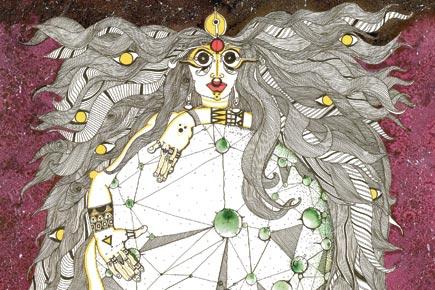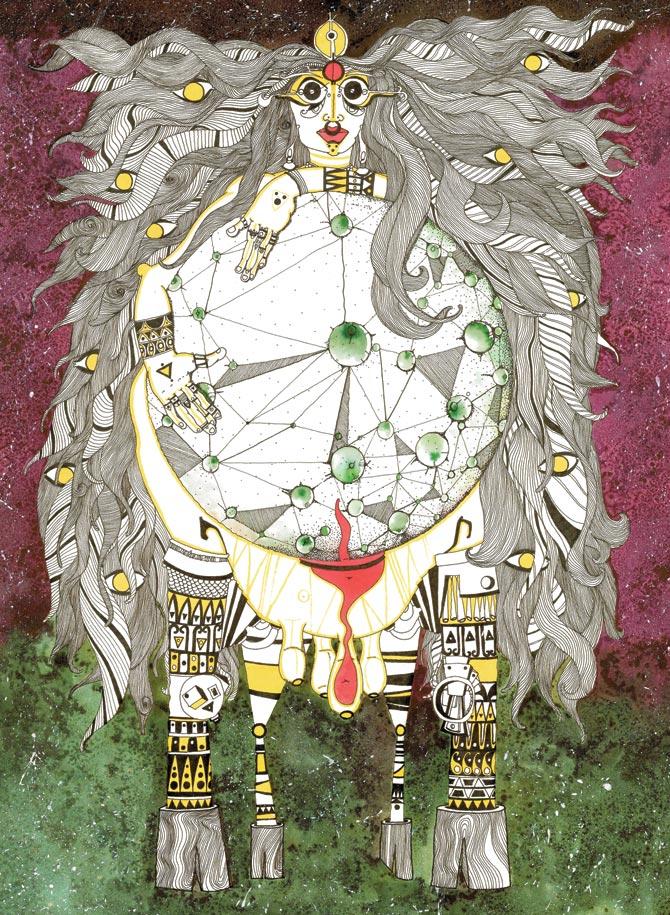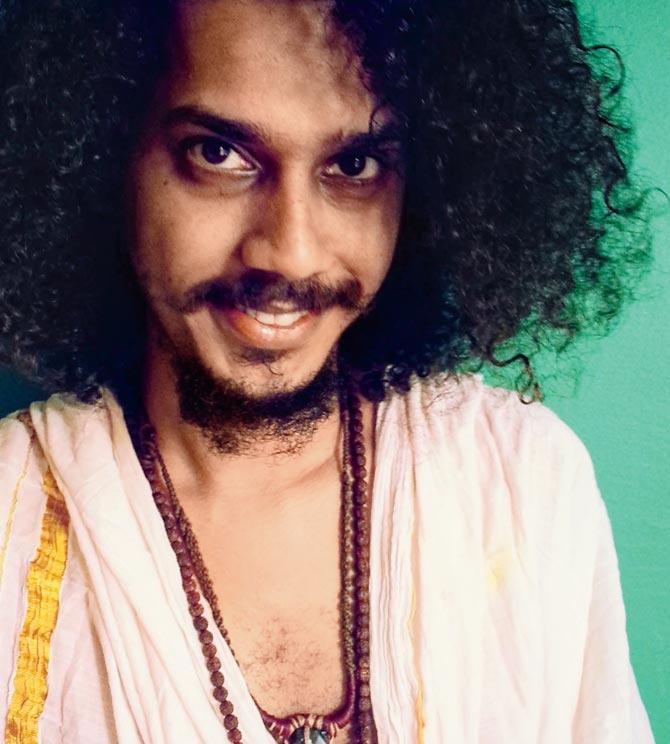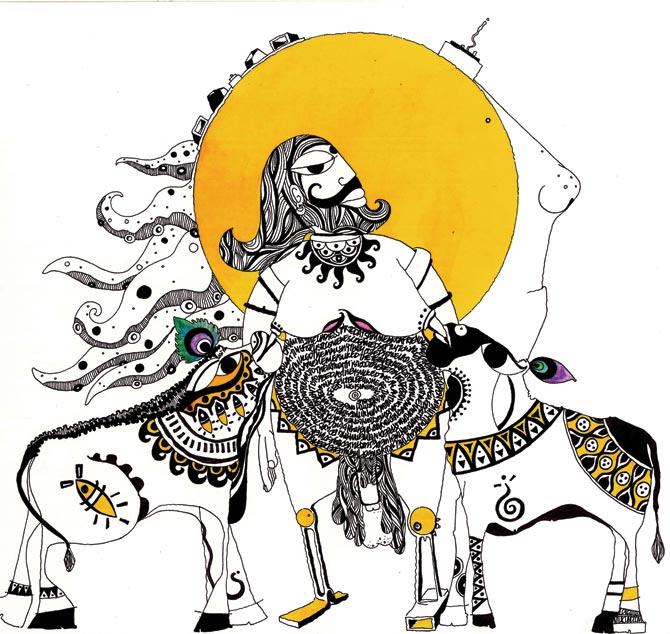Currently, the most controversial figure in the county — the cow — plays heroine in Mukund Iyer's book of sketches

Wild Kamadhenu
A slightly scandalous title, 2 Weeks with 200 Women and the Little Yellow Men, and the entranced figures in Mukund Iyer’s sketches raise one question: "Were you high when you made these?"
ADVERTISEMENT
In Goa’s southern beaches, the 28-year-old Mumbai architect, who practices bio-architecture in Turkey, replies, unoffended, "While I have my share of vices, I never mix my art with drugs or alcohol. I like clarity when I sketch."

Mukund Iyer (below) pays homage to the abundance and sacrifice that a cow symbolises, as in his sketch
Wild Kamadhenu (above)

With beads around his neck and his shock of curly hair, the self-proclaimed nomad is the artist behind 28 sketches in 2 Weeks that pay homage to this year’s mother of all controversies in the country — the humble cow. Calling someone a cow, whether in English or Tamil, is not meant as praise, but Iyer says, "The cow is the most effective domesticated animal and symbolises surrender and abundance. Dung, urine, milk, leather, meat — the cow gives it all, be it in India or in Turkey.’ If Iyer calls you a cow, be sure to take it as a compliment.
The sketches, right from Kamadhenu’s hair flowing copiously like a goddess’s to a tomboyish calf protectoress, were drawn during Iyer’s stint of two weeks at a organic dairy farm on the outskirts of Istanbul. On site for a project, Iyer cleaned the shed, fed and milked 200 cows, took part in deliveries and, he confesses, even spoke to the animals once in a while. The end of each day was sketching time for Iyer, when he put together his interactions with his beloved creatures. "Each sketch has a story, and together they work like a series. You could call it a storybook, or a travelogue even," he says. Some of sketches are from Iyer’s journeys across the west coast of Turkey, but all of them are his understanding of "the energies of different spaces".

The masculine and the feminine co-exist, as in Nicolas the motherly father by Iyer
On the subject of energies, the cow represents the feminine in his sketches, while the masculine is represented by tons of little men dressed in yellow. The men, scattered across sketches, resemble astronauts, without oxygen tanks. Iyer describes them thus: "They are the opposite of the feminine energy and signify the sudden rush of blood, the crazy energy inside us all." But like yin and yang, anima and animus, Shiv and Shakti, the little yellow men cannot exist without the bovine women.
Raised in Mumbai, Iyer left for Turkey in 2013 to make structures using natural materials that were built by communities. The architecture degree he acquired from a well-known city college, he says, "Taught me what I shouldn’t do with my life. The lack of a permanent address has given me my language in art (showcased in www. sochalaya.com) and my community architecture called Obaruhu."
Iyer was a frequent vacationer in Kottayam, Kerala, when little, visiting the temple grounds filled with cattle. His grandmothers’ tales of Hindu mythology have influenced his works; he sports the sacred thread worn by the ‘upper caste’, and is a vegetarian. In Maharashtra, where the line is drawn between beef-eaters and cow-shelterers, it is hard to root for the bovine without seeming like a bhakt. It’s just love in the time of beef-bans.
 Subscribe today by clicking the link and stay updated with the latest news!" Click here!
Subscribe today by clicking the link and stay updated with the latest news!" Click here!








